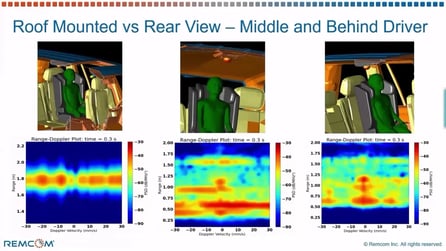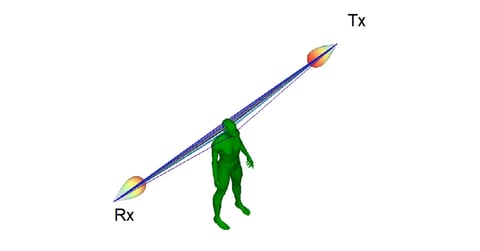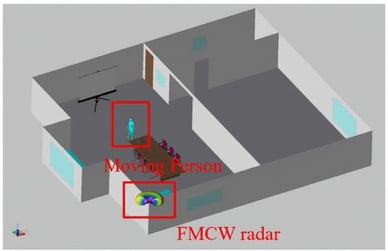Animating Vital Signs in Radar Simulations: Comparing Physical Optics Against 28.5 GHz Channel Measurements
 Monitoring vital signs such as breathing or heart rates as well as other physical movements in complex environments is the basis for many emerging applications spanning from healthcare to autonomous vehicles. Designing Radar systems capable of remotely monitoring these movements necessitates measurement campaigns in combination with advanced machine-learning algorithms. Despite the compelling applications and the need for large and diverse data sets for validation of design, there are few examples of simulated human movement in multipath environments in the literature. To address this gap, the work presented here outlines a method to accurately simulate Radar back-scatter from time varying human movement. Specifically, we animate human breathing with anatomically accurate mathematical models through physical-optics-based simulation and validated them against monostatic Radar measurements with a 28.5 GHz channel sounder in a semi-anechoic chamber by the National Institute of Standards and Technology, capturing phase and path loss over time from a human breathing positioned 2 m away. Using vital sensor data as ground truth, we demonstrate the animations to match the simulated human's breathing patterns and heart rate. Furthermore, the simulation resulted in excellent agreement with the measured phase across ten breaths, and had a root-mean-square error (RMSE) of 2.1 dB in path loss.
Monitoring vital signs such as breathing or heart rates as well as other physical movements in complex environments is the basis for many emerging applications spanning from healthcare to autonomous vehicles. Designing Radar systems capable of remotely monitoring these movements necessitates measurement campaigns in combination with advanced machine-learning algorithms. Despite the compelling applications and the need for large and diverse data sets for validation of design, there are few examples of simulated human movement in multipath environments in the literature. To address this gap, the work presented here outlines a method to accurately simulate Radar back-scatter from time varying human movement. Specifically, we animate human breathing with anatomically accurate mathematical models through physical-optics-based simulation and validated them against monostatic Radar measurements with a 28.5 GHz channel sounder in a semi-anechoic chamber by the National Institute of Standards and Technology, capturing phase and path loss over time from a human breathing positioned 2 m away. Using vital sensor data as ground truth, we demonstrate the animations to match the simulated human's breathing patterns and heart rate. Furthermore, the simulation resulted in excellent agreement with the measured phase across ten breaths, and had a root-mean-square error (RMSE) of 2.1 dB in path loss.
S. Mukherjee et al., "Animating Vital Signs in Radar Simulations: Comparing Physical Optics Against 28.5 GHz Channel Measurements," 2024 IEEE Radar Conference (RadarConf24), Denver, CO, USA, 2024, pp. 1-5, doi: 10.1109/RadarConf2458775.2024.10548317.


